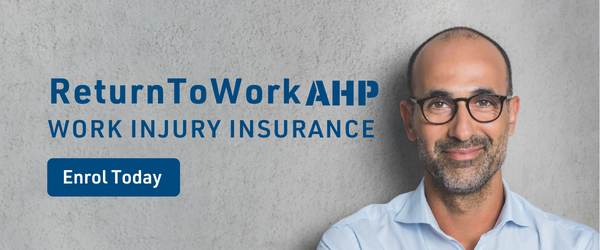What is the Clinical Framework for Allied Health Professionals?

The key to rehabilitation for any patient after surgery or significant injury is a whole of person approach that aims to maximise quality of life and minimise the need for ongoing health support.
Allied Health Professionals play a key role in delivering rehabilitation services to people who have been injured at work, driving their recovery and return to work by:
- Helping people regain physical functionality or adjust to a different level of functionality;
- Assessing their client’s work environments to improve their safety and independence; and
- Helping people adjust to life changes resulting from their injury so they can have the highest level of function possible across physical, social, psychological and vocational domains.
Allied Health Professionals achieve this by working in the context of the Clinical Framework for the Delivery of Health Services.
Developed by WorkSafe Victoria and the Transport Accident Commission (TAC), the Clinical Framework outlines a set of guiding principles for the provision of healthcare services to support healthcare professionals in their treatment of a compensable injury.
All Allied Health Professionals providing services to injured people as part of workers compensation schemes are expected to adopt these principles and deliver their services in line with the Clinical Framework, which has been supported by all Australian states and territories.
These five principles are:
- Measure and demonstrate the effectiveness of treatment.
- Adopt a biopsychosocial approach.
- Empower the injured person to manage their injury.
- Implement goals focused on optimising function, participation and return to work.
- Base treatment on best available research evidence.
Here we provide some more information about each of these guiding principles.
1. Measure and demonstrate the effectiveness of treatment
Measuring and demonstrating the effectiveness of treatment provides information on the rate and direction of change (i.e. is the person’s health status improving, worsening or not changing) which then informs and justifies decisions to continue, change or cease treatment.
So what should be measured and how?
The aspects of a person’s health status that are expected to change with treatment, related to the functional goals of therapy, and relevant to the person’s injury should be measured. This could include pain, depression, work performance or physical function, and should be measured with tools that are reliable, valid and sensitive to change.
2. Adopt a biopsychosocial approach
Research has shown that a biopsychosocial approach to injury management improves function, facilitates recovery and maximises independence.
But what is a biopsychosocial approach?
A biopsychosocial approach ensures that your assessment and treatment of an injured client considers the biological, psychological and social factors that influence a person’s health and affects their function and participation at home, at work and in the community.
It also enables you to identify and manage any risk factors which could impact optimal treatment outcomes.
3. Empower the injured person to manage their injury
The main strategies to empower an injured person to manage their injury are through education, setting expectations, developing self-management strategies and promoting independence from treatment.
These treatment strategies help injured people become independent in their health and injury management, which is a key measure of treatment effectiveness.

4. Implement goals focused on optimising function, participation and return to work
Research has demonstrated that long-term absence from work and unemployment has a negative impact on a person’s health and wellbeing. This is why encouraging people to return to work as soon as possible, once it is safe to do so, is so important.
Goals that focus on optimising function, participation and return to work should be:
- Developed in collaboration with, and agreed to by, the injured person;
- Functional and SMART – specific, measurable, achievable, relevant and timed; and
- Regularly assessed and reset or modified as necessary.
Setting goals in this manner will increase the likelihood of them being achieved, and will therefore optimise an injured person’s health outcomes.
5. Base treatment on the best available research evidence
Using the best available and highest level research evidence to inform your decision-making and develop a treatment plan ensures that the treatment you offer has the best chance of success.
Additionally, it also ensures that you avoid treatments that are likely to be ineffectual or harmful.
Even though you will have a treatment preference based on your training, clinical experience and the specific needs of your injured client, it is important that you continually review your treatments to ensure they are still in line with best practice.
How can GPEx help you?
In partnership with ReturntoWorkSA, GPEx has developed a free online course for Allied Health Professionals based on this Clinical Framework.
In ReturntoWorkAHP, you will learn about:
- The health benefits of work;
- The Return to Work Scheme;
- Working effectively as a member of the treatment team;
- Developing a pathway to recovery in collaboration with your patient;
- Performing early screening to identify the risk of poor outcomes and taking appropriate action to address potential issues;
- Practical strategies for effective coaching and counselling, including how to recognise and address barriers to recovery;
- Using a biospsychosocial approach when treating patients; and
- Measuring and demonstrating effectiveness of treatment.
Make sure you have the skills, tools and knowledge you need to support your patients through their recovery and return to work, and enrol in ReturntoWorkAHP today!
References:
- Allied Health Professions Australia, “Rehabilitative Care”
- ReturntoWorkSA, “Allied Health”
- Transport Accident Commission and WorkSafe Victoria (June 2012), “Clinical Framework For the Delivery of Health Services”, ReturntoWorkSA